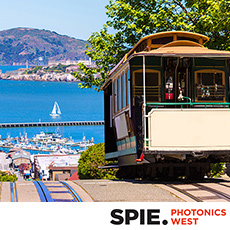Imagine
that you wear varifocal glasses and need new ones. You go to an
optometrist and, without time-consuming adaptations, measuring or trying
on frame after frame, you look at yourself in a mirror and - voila! -
your chosen frame is on your nose.
Automatic calculation of eyeglass frames and lenses enables customized fit
International eyeglass manufacturer Rodenstock
GmbH of Munich has developed an optometrist service terminal that can do
just that. It enables automatic calculation of eyeglass frames and
lenses customized to fit an individual's face - all in about a second.
The terminal, called the ImpressionIST, performs
several tasks. It provides interactive information about the eyeglasses,
presents frames from which the customer can choose, calculates the
ideal dimensions of the glasses via a three-dimensional video system,
and offers consultation regarding the quality of the glasses. The
technical requirements of the system are targeted to the aesthetic
aspects of choosing glasses.
Exacting images
The patent-pending 3D video system, which
measures the customer's face, must make the fitting procedure as easy as
possible. Thus, the 3D measurements are done with the customer looking
into a semitrans-parent mirror that is 75 cm away. The imaging system,
mounted behind the mirror, is hidden from view. It uses two cameras from
Allied Vision Technologies to take images simultaneously. After the
measurements are concluded, the optometrist can go over the images with
or without the customer.
One camera captures the face from the front and
the other, from below and the side (Figure 1). These create
aesthetically pleasing images, while being suitable for analysis.
The images are processed based on the software library HALCON from MVTec Software GmbH
of Munich. The software delivers the real-world 3D coordinates
necessary for manufacturing the frames and lenses. By acquiring a
calibration plate before the first start-up of the ImpressionIST, inner
and outer camera parameters can be appointed to deliver the coordinates.
The analysis begins with a position cross mark
placed at each pupil's center on the image of the front of the face
(Figure 2). The software uses information about the camera position,
illumination and reflection from the cornea to calculate the centers.
To make measuring as comfortable as possible and
to ensure the customer's elemental posture during image acquisition, no
flash is used. For this reason, three 11-W lamps from Osram are
integrated into the system, arranged to find the pupils' centers from
the reflections on the corneas. The showroom should be illuminated with
diffuse light.
The final position can be adjusted by the
optometrist. The brims of the glasses are computed by edge extracting
each glass's front. Other cross marks are positioned at the point where
the extensions of the straight lines through the pupils' cross marks
meet the brims. These marks also can be adjusted. The same positions are
determined for the image from the other camera, and the already
adjusted cross marks from the front image are projected onto it (Figure
3). Then, the cross marks can be automatically transferred into each
other.
For Rodenstock, it was important that the
optometrist maintain the ability to adjust the positioning, although the
image processing software could do it. After the optometrist approves
the positioning, the 3D coordinates of the corresponding cross marks are
computed, taking the calibration into consideration.
The computation delivers all the parameters
needed to manufacture the frames, including monocular pupil and corneal
vertex distance, pantoscopic tilt, face-form angle, fitting point
height, decentration (of the fitting point), boxed data (lens width and
height), distance between lenses, frame shape and optimized lens
diameter. The results are documented in a hard copy that includes
illustrating figures and that is optimized to allow grinding of the
lenses.
Rodenstock's tests of the system by Rodenstock
have found that the measurements are accurate and repeatable, depending
on the customer's ability to repeat a position. The reproducibility
using the system was 1.5 times higher than when using a free distal
view.
The system is currently available only for Rodenstock consultant optometrists.
To Know More About To Know More About Machine Vision System, India Contact Menzel Vision and Robotics Pvt Ltd at (+ 91) 22 67993158 or Email us at info@mvrpl.com
Contact Details
Address: 4, A-Wing, Bezzola Complex,
Sion Trombay Road, Chembur
400071 Mumbai, India
Tel:(+91) 22 67993158
Fax: (+91) 22 67993159
Mobile:+91 9323786005 / 9820143131
E-mail: info@mvrpl.com
Sion Trombay Road, Chembur
400071 Mumbai, India
Tel:(+91) 22 67993158
Fax: (+91) 22 67993159
Mobile:+91 9323786005 / 9820143131
E-mail: info@mvrpl.com
Source - mvtec.com


